
Website for the PBS series "A Science Odyssey." Numerous opportunities to explore the people and discoveries of science.
- Subject:
- Mathematics
- Science
- Material Type:
- Lesson
- Provider:
- PBS
- Date Added:
- 08/28/2023

Website for the PBS series "A Science Odyssey." Numerous opportunities to explore the people and discoveries of science.

From the Evidence for Evolution Library at PBS, this is a short article about biogeography. The distribution of animals is one source of evidence for Darwin's descent with modification.

This article looks at the growing energy consumption from consumer electronics and the increases it may cause in greenhouse gases and global warming. The article appears in the free, online magazine Beyond Penguins and Polar Bears.
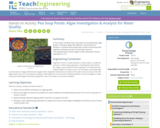
In this activity, students will learn how water can be polluted by algal blooms. They will grow algae with different concentrations of fertilizer or nutrients and analyze their results as environmental engineers working to protect a local water resource.

This video segment adapted from the NOW-RAMP 2002 Expedition documents a research expedition to Pearl and Hermes Atoll in Hawai`i. Watch as biologists assess the bird and plant populations and then work to eradicate invasive species.

In this video from Outdoor Nevada, Brian Wignall speaks with an ornithologist about the peregrine falcon, a majestic and endangered species that is one of the fastest animals in the world.

In this media-rich, self-paced lesson, students explore the industries that produce and rely on advanced technology and assess how their goals and interests may make them well suited for a career in this cutting-edge sector.
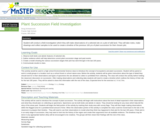
This activity is a field investigation of plant succession stages, which students will gather evidence of the areas plant history.
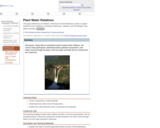
Plant water relations are presented in this learning activity to help participants understand the components of water potential, explain how water moves through plants, provide examples of plant adaptations to water stress, and have a general understanding of how water potential can be measured.
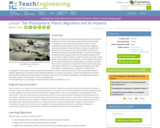
Students are introduced to the growing worldwide environmental problems that stem from plastic waste. What they learn about microplastics and the typical components of the U.S. water treatment process prepares them to conduct three engaging associated activities. During the lesson, students become more aware of the pervasiveness and value of plastic as well as the downstream pollution and health dangers. They learn how plastic materials don’t go away, but become microplastic pollution that accumulates in water resources as well as human and other animal bodies. They examine their own plastic use, focusing on what they discard daily, and think about better ways to produce or package those items to eliminate or reduce their likelihood of ending up as microplastic pollution. A concluding writing assignment reveals their depth of comprehension. The lesson is enhanced by arranging for a local water treatment plant representative to visit the class for Qs and As. In three associated activities, students design/test microplastic particle filtering methods for commercial products, create mini wastewater treatment plant working models that remove waste and reclaim resources from simulated wastewater, and design experiments to identify the impact of microplastics on micro-invertebrates.
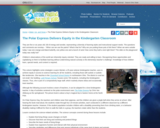
This free, online article, developed for elementary teachers, describes a Kindergarten polar science, standards aligned, unit centered on The Polar Express developing literacy, math, and science skills.

In the following video, Evan Seimann, PhD, defines key terms and concepts of ecology, basic characteristics of populations, population age structures and densities, and explains the dynamics of growth models within a population. [22:59]
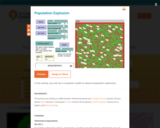
Many factors influence the success and survival rate of a population of living things. Explore several factors that can determine the survival of a population of sheep in this NetLogo model. Start with a model of unlimited grass available to the sheep and watch what happens to the sheep population! Next try to keep the population under control by removing sheep periodically. Change the birthrate, grass regrowth rate, and the amount of energy rabbits get from the grass to keep a stable population.

This activity is an opportunity for students to explore civil government and to present what they have learned about electric power generation in a persuasive manner

In this video adapted from Texas Parks and Wildlife Department, learn about the prairie dog, the importance of its role in its ecosystem, and how it is affected by an ever-growing human population.
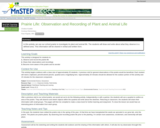
This activity is a field exploration where students observe, record and share their findings of plant and animal life on the prairie.
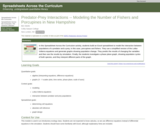
Spreadsheets Across the Curriculum activity/Introductory Ecology course. Students build and manipulate spreadsheets to model and graph populations using the Lotka-Volterra predator-prey equations.
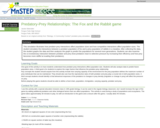
This activity is a simulation that illustrates how population sizes are affected by predator-prey relationships and competitive interactions among prey.

In this video segment from NatureScene, observe dragonflies and mayflies near Cedar Creek at Congaree Swamp National Park.
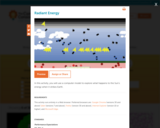
How does energy flow in and out of our atmosphere? Explore how solar and infrared radiation enters and exits the atmosphere with an interactive model. Control the amounts of carbon dioxide and clouds present in the model and learn how these factors can influence global temperature. Record results using snapshots of the model in the virtual lab notebook where you can annotate your observations.